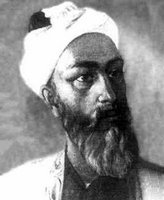Persian History at a Glance
Archaeological studies during the first half of the twentieth century indicate that as early as 10,000 BC, tribes lived on the southern shores of the Caspian, one of the few regions of the world, which according to scientists escaped the Ice Age. They were probably the first men in the history of mankind to engage in agriculture and animal husbandry. It was they and others who spread out shortly afterwards along the Zagros Mountains in central Iran and founded the first centers of civilization in the land (Elam).
The history of settlement in the plateau of Iran from New Stone Age till migration of Aryans is not yet very clear. But there are reliable evidences, which indicate that Iran has been inhabited for a very long time now. Settlement centers have emerged either close to water resources like springs and rivers or completely close to Alborz and Zagross Mountains. The most important centers of this kind are: Sialk Tappeh (hill) in Kashan, Hezar Tappeh in Damghan, Torang Tappeh in Gorgan, Hasanlu Tappeh in Azerbaijan, Marlik Tappeh in Roodbar, and Susa (Shoosh) in Khuzestan.Some vestiges have been discovered by archeological excavations in these civilization centers, the antiquity of which dates back to the 5th millennium BC.
Migration of Aryan clans to the plateau of Iran began since 2nd millennium BC.Out of these tribes, Parthians dwelled in Khorasan, Medes in the west, and Parsees resided in the south of Iran. The Median Empire rose in Hegmataneh (Ekbatan), presently called Hamadan.The Achaemenid established the first great Iranian Empire after defeating the Medians and conquest of their capital. The limits of the Achaemenian territory in the reign of Dariush I (522-485BC.), extended from the Plain of Sand River in the east to the borders of Greece at the west. Passargad and Persepolis are the vestiges of this period and are amongst the most important historical places as well as the significant tourism attractions of Iran. Every year, thousands of tourists from four corners of the world visit these sites.
After the decline of the Achaemenian dynasty, and destruction of Persepolis by Alexander, his successors (Solookis) dominated over Iran for a short period of time. During this period, the interaction of Iranian and Hellenic cultures took place. Around the year 250 BC, the Parthians, who were one of Aryan tribes as well as horse riders, advanced from Khorasan towards the west and southwest and founded their empire over Iran plateau in Teesfoon.This empire survived till the year 224 AD. The Sasanids, after defeating the last Parthian king in 225 AD, founded a new empire, which lasted till mid 7th century AD. The ancient period of Iran (Persia), regarding its political, social and cultural characteristics, is one of the most magnificent epochs of heritage and historical buildings in Persepolis, Pasargad, Shoosh, Shooshtar, Hamedan, Marvdasht (Naghsh-e-Rostam), Taghbostan, Sarvestan, and Neishabour that are really worth-visiting.
Emergence and influence of Islam in Iran happened in early 7th century AD. after the decline of Sasanid empire. Since then, new era began in the history of Iran which caused great fundamental evolution in social, political, religious, governmental, and public conditions of the country. Iranians, who were very disappointed with existing social and economic inequality in the time of Sasanids, accepted Islam very warmly and tried to expand it and enrich its cultural magnanimity quite rapidly.
In spite of accepting Islam, Iranians never covered up their opposition against dominance of Omavi and Abbasi Caliphs and their tyrannies and founded many autonomous movements to confront them. On the other hand, Caliphs, for neutralizing and suppressing these Iranian movements, which were based on partisanship of the Islam and Prophet’s family and establishment of a government on the basis of Imamat, tried to support non-Iranian forces. Due to continuity of these wars of attrition among local governors, their power was exhausted, so the ground for dominance of stranger tribes of Central Asia, like Saljooghi Turks, Mongols, and Taymoorians, was brought about. In Safavid time, the second great Iranian Empire was founded and Shiia religion, disciples of which were seriously limited till then, was formalized. The dynamic nature of Shiia religion and its political and social commitments firmly safeguarded the independence and national identity of Iran against Ottomans’ assaults (Turky). Iran, as a new political and religious power, could once again hoist the flag of resistance against a very powerful empire that was the claimant of supremacy of Islamic world. With the decline of Safavid, Afsharieh and then Zandieh took the throne. After Zandieh government, the time of Qajarieh began during which the influence of foreign powers in internal affairs of Iran expanded. Meanwhile, social movements of Tobacco, Constitutional Revolution, and Forest Uprising headed by Mirza Koochak Khan-e-Jangali, Sheikh Mohammad Khiabani revolt, and a lot of other brave reform movements happened. In Pahlavi time, Oil Industry Nationalization Movement intrigued the movement of June 5th 1963 and other autonomous movements that gave rise to the Islamic Revolution under the leadership of Late Ayatollah Khomeini in 1979.
Picture of Sialk Tappeh (hill):
http://www.bestirantravel.com/images/sights/kashan/sialktapeh.jpg
Artifacts from Elamid time:
http://iranchamber.com/history/elamite/images/silver_vase3000bc.jpg
http://iranchamber.com/history/elamite/images/marlik_gazelles.jpg
Pictures of Persepolis:
http://www.bamjam.net/Iran/images/Perse07.jpg
http://www.bamjam.net/Iran/images/Perse08.jpg
http://www.traveladventures.org/continents/asia/images/persepolis02.jpg
http://www.traveladventures.org/continents/asia/images/persepolis03.jpg
http://www.traveladventures.org/continents/asia/images/persepolis08.jpg
http://www.shirazcity.org/shiraz/Shiraz%20Information/Sightseeing/images/Persepolis/b13.jpg
http://www.shirazcity.org/shiraz/Shiraz%20Information/Sightseeing/images/Persepolis/b59.jpg
http://www.shirazcity.org/shiraz/Shiraz%20Information/Sightseeing/images/Persepolis/b14.jpg
http://www.shirazcity.org/shiraz/Shiraz%20Information/Sightseeing/images/Persepolis/b69.jpg
http://www.shirazcity.org/shiraz/Shiraz%20Information/Sightseeing/images/Persepolis/b65.jpg
Tomb of Cyrus the Great:
http://www.oznet.net/iran/Tomb.jpg
http://www.iranpix.com/images/01iranpix/ancient_iran/pasargad/01-07-30-4394-iran-persia-pasargad-
Tomb of Darius:
http://www.oznet.net/iran/Daritomb.jpg
Cidal of Bam:
http://iranianlanguages.com/pictures/sites/images/p26.jpg
Achamanid Artifact found in Hekmatane:
http://iranianlanguages.com/pictures/sites/images/p3.gif
http://iranianlanguages.com/pictures/sites/images/p4.gif
Caspian Sea:
http://iranianlanguages.com/pictures/sites/images/p9.jpg
Ziggurat:
http://www.oznet.net/iran/zigg2.jpg
Susa Cidal:
http://iranianlanguages.com/pictures/sites/images/p23.jpg
http://www.oznet.net/iran/soosh.jpg
Shooshtar:
http://iranianlanguages.com/pictures/sites/images/p22.jpg
Picture of Nader Shah Afshar:
http://www.iranchamber.com/history/afsharids/images/nader_shah.jpg
Parthian city of Hatra in Northern Mesopotamia:
http://www.mesopotamia.co.uk/time/explore/images/parthian.jpg
A Sasanian silver bowl showing a king hunting:
http://www.mesopotamia.co.uk/time/explore/images/sasanian.jpg
Süleiman I, one of the greatest Ottoman sultans:
http://www.mesopotamia.co.uk/time/explore/images/ottoman.jpg
'Ali Qapu created by Shah Abbas Safavi:
http://isfahan.anglia.ac.uk/aliqapu/aliqap1i.htm
Picture of Reza shah Pahlavi:
http://www.sedona.net/pahlavi/rezashah.jpg
Picture of Mohammad Reza shah Pahlavi and his wife Farah:
http://www.sedona.net/pahlavi/mrpgulf.jpg
http://www.farahpahlavi.org/qindex4.jpg
Picture of Khomeyni:http://i-cias.com/e.o/ill/khomeini.jpg





